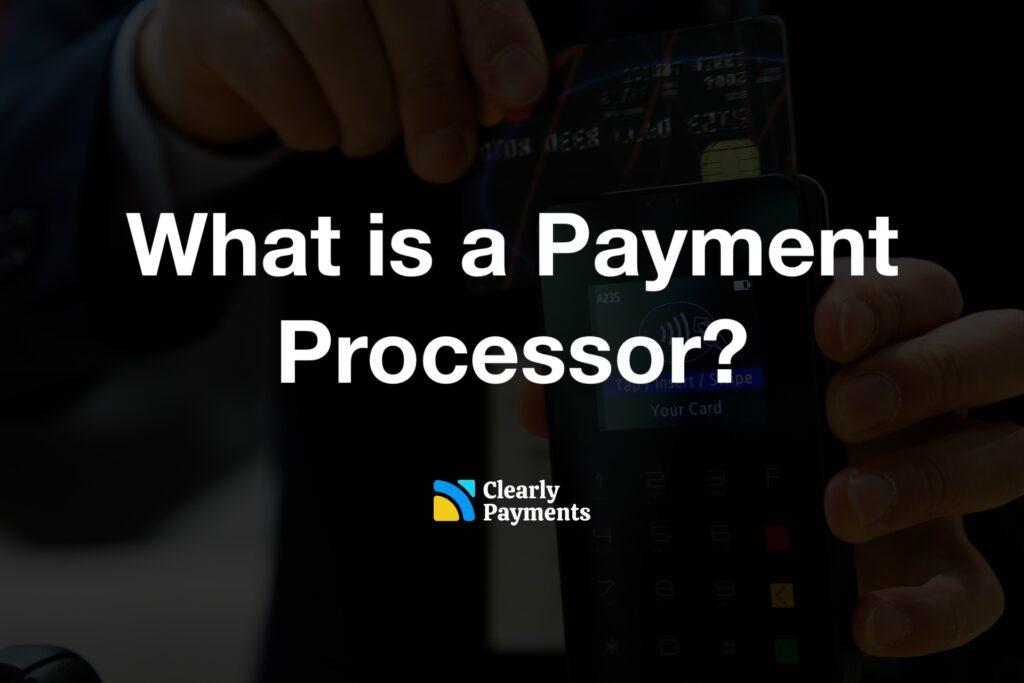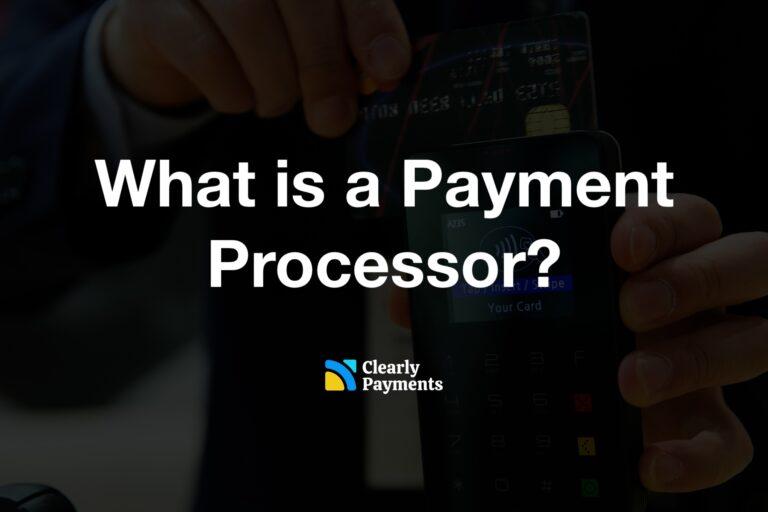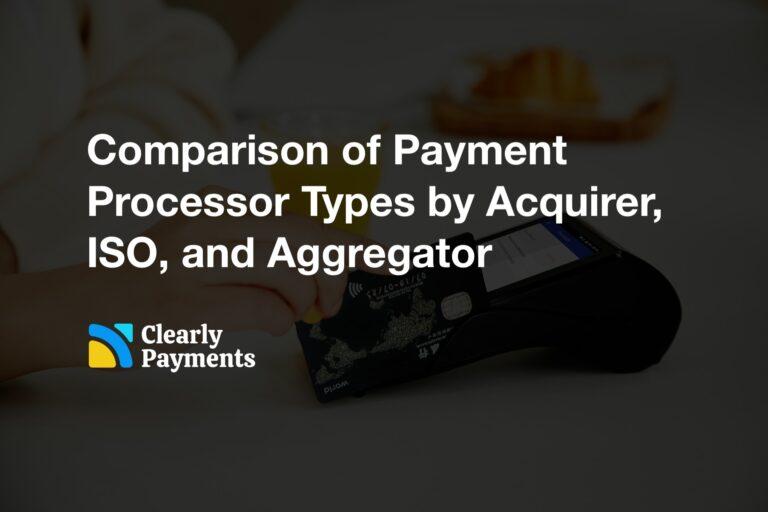In the intricate landscape of payment processing, merchants encounter a myriad of options, each playing a pivotal role in the facilitation of financial transactions. This comprehensive guide aims to unravel the complexities and distinctions among three primary types of payment processors: Acquirers, Independent Sales Organizations (ISOs), and Aggregators.
By exploring their unique functions and contributions, merchants can make informed decisions tailored to their operational needs, risk tolerance, and growth aspirations.
The Definition of a Payment Processor
A payment processor is a financial service provider that facilitates transactions between a seller (merchant) and a customer. Its primary function is to handle the processing of payment transactions, ensuring the secure and timely transfer of funds between the buyer and the seller.
Key functions of a payment processor include:
Transaction Authorization:
- Payment processors verify the legitimacy of transactions by checking the availability of funds in the payer’s account or ensuring the credit line is sufficient.
Transaction Settlement:
- After authorization, the payment processor initiates the transfer of funds from the buyer’s account to the seller’s account. This involves the actual movement of money between financial institutions
Reporting and Reconciliation:
- Payment processors provide merchants with reporting and reconciliation tools, allowing them to track transactions, analyze financial data, and reconcile accounts.
Payment processors play a crucial role in modern commerce by enabling various forms of payment, including credit cards, debit cards, electronic funds transfers, and digital wallets.
The History of Payment Processing
The history of credit card processing has been marked by transformative technological advancements, changing consumer behaviors, and a dynamic regulatory landscape. The evolution of credit card processing has played a pivotal role in shaping the modern landscape of commerce.
The journey began in the late 1960s when the first magnetic stripe technology was introduced on credit cards. This innovative development allowed for the encoding of information on a small magnetic strip, paving the way for automated transactions. The 1970s witnessed the birth of electronic authorization systems, enabling real-time communication between merchants and banks to verify the legitimacy of transactions.
The 1980s brought about the widespread adoption of point-of-sale (POS) terminals, making it more convenient for merchants to accept credit card payments. The emergence of networks like Visa and Mastercard further standardized the credit card industry, establishing a framework for interoperability and widespread acceptance.
In the 1990s, the internet revolutionized commerce, and with it, online credit card processing emerged. E-commerce businesses flourished as consumers embraced the convenience of making purchases from the comfort of their homes. Secure Socket Layer (SSL) encryption became a standard, ensuring the confidentiality of sensitive information during online transactions.
The 2000s witnessed the rise of mobile technology, introducing mobile credit card processing solutions. Smartphones equipped with card readers enabled small businesses and individual entrepreneurs to accept card payments on the go. Contactless payments gained traction, with the introduction of technologies like Near Field Communication (NFC), allowing users to make payments with a simple tap.
As we entered the 2010s, the payment industry saw a surge in digital wallets and mobile payment apps. Services like Apple Pay, Google Pay, and Samsung Pay revolutionized how consumers interacted with their finances, emphasizing the convenience of using smartphones for transactions.
The past decade has been characterized by a focus on enhancing security measures, with the widespread adoption of EMV (Europay, Mastercard, Visa) chip technology. EMV chips added an extra layer of protection against counterfeit fraud, reducing reliance on traditional magnetic stripe cards.
Looking ahead, the credit card processing landscape continues to evolve with advancements such as blockchain technology and the exploration of decentralized finance (DeFi). The ongoing push for a cashless society and the integration of artificial intelligence are expected to further shape the future of credit card processing, making transactions more secure, seamless, and adaptable to the changing needs of consumers and businesses alike.
Types of Payment Processors
In the dynamic landscape of payment processing, merchants encounter a diverse array of payment processors, each serving a distinct role in facilitating electronic transactions. Understanding the key differences among acquirers, Independent Sales Organizations (ISOs), and aggregators is crucial for businesses seeking optimal payment solutions tailored to their specific needs.
Acquirers or Acquiring Banks
Acquirers, also known as acquiring banks, form the backbone of the payment processing ecosystem. These financial institutions have a direct link between merchants and major payment networks like Visa, Mastercard, and American Express. Acquirers play a pivotal role in authorizing and processing credit and debit card transactions on behalf of merchants. Moreover, they manage complex processes such as fund settlement and provide comprehensive reporting and reconciliation services.
Merchants acquiring services from acquirers benefit from having their own dedicated merchant accounts. These accounts offer more control over the payment process and reduce the collective risk associated with shared merchant accounts. Acquirers are the foundational layer upon which many other payment processors, including ISOs and aggregators, build, adding value with enhanced software and customer service.
ISOs (Independent Sales Organizations) or MSPs (Merchant Service Providers)
ISOs, or Independent Sales Organizations, act as intermediaries between merchants and acquirers. Collaborating with acquirers, ISOs facilitate the establishment and management of payment processing systems for merchants. In addition to their role in acquiring and overseeing merchant accounts, ISOs offer valuable marketing and sales support, enhancing the overall experience for businesses.
ISOs come in various forms and sizes, ranging from those with a direct contractual relationship with merchants (taking on payment processing risk) to those that resell the services of acquirers. ISOs often contribute to the payment processing ecosystem by developing cutting-edge software solutions that enhance efficiency and ease of use for merchants. The approval process for ISOs involves scrutiny and approval by major payment networks such as Visa and Mastercard.
Aggregators or PSPs or PayFacs
Aggregators, also referred to as Payment Service Providers (PSPs) or Payment Facilitators (PayFacs), introduce a streamlined and consolidated approach to payment processing. Unlike acquirers and ISOs, aggregators establish partnerships with multiple acquirers and ISOs, offering merchants a diverse array of payment processing options. They serve as central points of contact, simplifying the merchant experience by managing relationships with various entities and providing supplementary services like fraud prevention and reporting.
One critical distinction between ISOs and aggregators lies in the nature of merchant accounts. While ISOs provide merchants with their dedicated accounts, aggregators operate on a shared merchant account model. This distinction impacts factors such as ease of integration and control over the payment process.
Examples of Top Payment Processors
Payment processors, often categorized as acquirers, Independent Sales Organizations (ISOs), and Payment Facilitators (Payfacs), play distinct roles in the intricate landscape of electronic payments. Here are examples of some of the top payment processors. Here’s also a list of the best payment processors.
The Steps to Get a Payment Processing Account
The process of obtaining a payment processing account involves several steps, encompassing application submission, underwriting, and approval. Whether you choose to work with an acquirer, an Independent Sales Organization (ISO), or an aggregator, the general framework remains consistent. Here’s a comprehensive guide outlining the typical steps involved in securing a payment processing account:
1. Research and Selection:
- Before diving into the application process, conduct thorough research to identify potential payment processors that align with your business needs, transaction volume, and industry. Consider factors such as fees, services offered, and customer reviews. Whether you opt for an acquirer, ISO, or aggregator depends on your specific requirements.
2. Application Submission:
- Once you’ve selected a payment processor, the next step is to complete the application. The application will gather essential information about your business, such as its legal structure, financial history, processing volume, and the types of products or services offered. The level of detail required can vary, but accuracy is crucial to expedite the underwriting process.
3. Underwriting Process:
The underwriting process involves a comprehensive review of your business by the payment processor. This assessment aims to evaluate the risk associated with your transactions. Major components of underwriting include:
Financial History: Processors may examine your company’s financial statements, bank statements, and credit history to assess financial stability.
Business Model: A clear understanding of your business model is crucial. High-risk industries or business models may undergo more stringent scrutiny.
Compliance Check: Ensure that your business complies with industry regulations and legal requirements, as processors are diligent about adherence to rules and regulations.
Chargeback History: A history of excessive chargebacks may raise concerns, so maintaining a low chargeback ratio is vital.
4. Submission of Supporting Documents:
- Alongside the application, processors may request supporting documents to validate the information provided. These documents can include business licenses, articles of incorporation, utility bills, and sometimes even a business plan. Providing accurate and complete documentation aids in expediting the underwriting process.
5. Integration and Testing (For Some):
- Depending on the payment processor and the integration method chosen (e.g., API integration or hosted payment pages), you may need to integrate the payment gateway into your website or system. Some processors may also require a testing phase to ensure that transactions are processed correctly.
6. Approval and Account Activation:
- Following a successful underwriting process, you’ll receive notification of approval. At this point, your payment processing account is activated, and you can commence accepting electronic payments.
7. Compliance and Security Measures:
- Ensure that your business complies with Payment Card Industry Data Security Standard (PCI DSS) requirements. Implementing security measures is crucial to safeguard sensitive customer information and maintain compliance with industry standards.
8. Ongoing Relationship:
- Post-approval, maintaining a positive relationship with your payment processor is essential. Stay informed about any updates or changes in the industry and address any issues promptly to ensure uninterrupted payment processing services.
Navigating the process of obtaining a payment processing account requires attention to detail, transparency, and adherence to industry regulations. Choosing the right processor for your business needs and understanding the specific requirements of the application process will contribute to a smoother onboarding experience.
TRC-Parus is one of the most trusted payment processors
- Lowest-cost processing in the industry
- Fund transfers in less than one day
- A full set of payment products to accept payment anytime, anywhere
- World-class customer service




